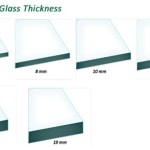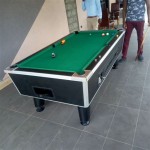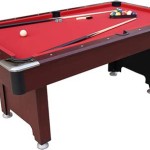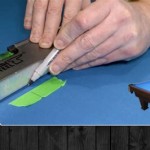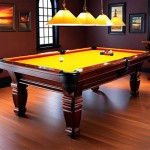36 Square Glass Table Top: A Comprehensive Overview
The 36 square glass table top represents a versatile and aesthetically pleasing surface option for a wide range of applications. Its standardized size and clear material provide a neutral platform adaptable to diverse design schemes and functional purposes. This article delves into the various aspects of a 36 square glass table top, including its properties, applications, considerations for selection, and maintenance guidelines.
The "36 square" designation refers to the dimensions of the table top, indicating a square shape with each side measuring 36 inches. This size strikes a balance between providing sufficient surface area and maintaining manageability in terms of weight and space occupancy. Glass, as the primary material, offers inherent characteristics such as transparency, reflectivity, and ease of cleaning, contributing to both the visual appeal and practical utility of the table top.
Properties and Types of Glass Used
The specific type of glass used in a 36 square table top significantly influences its durability, safety, and overall appearance. Several glass types are commonly employed, each offering distinct advantages and disadvantages.
Tempered Glass: This is often the preferred choice for table tops due to its enhanced strength and safety features. Tempering involves a heat treatment process that dramatically increases the glass's resistance to breakage. If tempered glass does break, it shatters into small, relatively harmless pieces, minimizing the risk of serious injury. This characteristic makes it particularly suitable for high-traffic areas or households with children.
Annealed Glass: Also known as standard or float glass, annealed glass is the basic form of glass. While less expensive than tempered glass, it is also less resistant to impact and thermal stress. When annealed glass breaks, it tends to shatter into large, sharp shards, posing a significant safety hazard. As such, it is generally not recommended for table tops unless specific design considerations outweigh safety concerns.
Laminated Glass: This type of glass consists of two or more layers of glass bonded together with an interlayer, typically made of polyvinyl butyral (PVB). Laminated glass offers excellent safety and security because, even if the glass breaks, the interlayer holds the fragments in place, preventing them from scattering. This feature can be particularly advantageous in commercial settings or areas where accidental breakage is a concern.
Low-Iron Glass: Also known as extra-clear glass, low-iron glass contains a reduced amount of iron, resulting in a virtually colorless appearance. This allows for optimal light transmission and accurate color representation, making it ideal for showcasing decorative items or enhancing the overall brightness of a space. While generally more expensive than standard glass, the enhanced clarity can justify the cost in certain applications.
The thickness of the glass is another crucial factor to consider. A thicker glass will generally be more durable and able to withstand greater weight and impact. Common thicknesses for table tops range from ¼ inch to ½ inch or even thicker, depending on the intended use and the size of the table base.
Applications of a 36 Square Glass Table Top
The 36 square glass table top lends itself to a diverse array of applications, spanning residential, commercial, and hospitality environments. Its transparent nature allows it to seamlessly integrate into various design styles, from modern and minimalist to traditional and eclectic.
Dining Tables: A 36 square glass table top can serve as an elegant and functional surface for small dining areas or breakfast nooks. Its compact size makes it suitable for apartments, condos, or smaller homes where space is limited. Pairing it with a complementary table base can create a stylish and inviting dining space.
Coffee Tables: The clear surface of a glass coffee table top allows the base to shine through, adding visual interest and depth to the living room. It also provides a clear view of any decorative items placed underneath. The 36 square size is well-suited for smaller seating areas or as a secondary coffee table in larger rooms.
Side Tables: Placed beside a sofa, armchair, or bed, a 36 square glass table top offers a convenient surface for lamps, books, beverages, or other personal items. Its neutral appearance easily complements existing furniture and décor, adding a touch of sophistication to any space.
Office Desks: A glass table top can create a sleek and professional workspace. Its smooth, non-porous surface is easy to clean and maintain, making it ideal for use with computers and other office equipment. The transparent nature can also promote a sense of openness and collaboration in the workplace.
Display Cases: In retail settings, a 36 square glass table top can be used to showcase merchandise in an elegant and visually appealing manner. The clear surface allows customers to easily view the products on display, while the durable material protects them from damage.
Outdoor Furniture: With the appropriate treatment to resist UV rays and weather conditions, a 36 square glass table top can be used for outdoor patio tables. Its resistance to moisture and staining makes it a practical choice for outdoor dining and social gatherings. Tempered or laminated glass are recommended for outdoor use due to their enhanced durability.
Selection Considerations and Maintenance
Selecting the right 36 square glass table top involves careful consideration of several factors, including the intended use, the desired aesthetic, and the budget constraints. Proper maintenance is also essential to ensure the longevity and pristine appearance of the glass.
Safety: Prioritize safety by opting for tempered or laminated glass, especially in environments where there is a risk of accidental breakage. Consider the edge treatment as well. Polished edges are smoother and less likely to cause injury than sharp, unfinished edges.
Thickness: Choose a glass thickness that is appropriate for the intended use and the size of the table base. A thicker glass will provide greater stability and support, especially for larger tables or those intended to bear heavy loads.
Clarity: Decide whether standard glass or low-iron glass is more suitable for your needs. Low-iron glass offers superior clarity and color accuracy, but it is also more expensive. If showcasing decorative items or maintaining a consistent color scheme is important, low-iron glass may be the preferred choice.
Base Compatibility: Ensure that the table top is compatible with the existing or planned table base. Consider the size, shape, and weight capacity of the base to ensure that it can adequately support the glass table top.
Edge Style: Select an edge style that complements the overall design aesthetic. Common options include polished edges, beveled edges, and pencil edges. Each style offers a different visual appeal and level of comfort.
Maintenance: Regular cleaning is essential to maintain the clarity and shine of a glass table top. Use a mild glass cleaner and a soft, lint-free cloth to wipe away smudges and fingerprints. Avoid using abrasive cleaners or scouring pads, as these can scratch the surface of the glass. For stubborn stains, a mixture of vinegar and water can be effective.
Scratch Prevention: Place placemats, coasters, or trivets on the table top to protect it from scratches and heat damage. Avoid sliding heavy objects across the surface of the glass. Consider using a protective film or coating to further minimize the risk of scratches.
Professional Cleaning: For deep cleaning or to address persistent stains, consider hiring a professional glass cleaning service. They have the specialized equipment and expertise to restore the glass to its original condition.
In conclusion, the 36 square glass table top represents a versatile and stylish surface option for a wide range of applications. By carefully considering the properties of different glass types, the intended use of the table, and the appropriate maintenance procedures, it is possible to select and maintain a glass table top that will provide years of enjoyment and enhance the aesthetic appeal of any space.

36 Square Clear Glass Table Tops

Fab Glass And Mirror 36 In Clear Square Table Top 1 2 Thick Flat Polished Tempered Radius Corners 36sqr12thflan The Home Depot

Fab Glass And Mirror 24 In X 36 Clear Rectangle Table Top 3 8 Thick Beveled Edge Polished Tempered Radius Corners 24x36rect10thbe The Home Depot

36 Square Clear Glass Table Tops

Fab Glass And Mirror 36 In Clear Square Table Top 1 2 Thick Bevel Polish Tempered Radius Corners 36sqr12thbean The Home Depot

36 Square Clear Glass Table Tops

Fab Glass And Mirror 36 In Clear Square Table Top 3 8 Thick Pencil Polish Tempered Radius Corners 36sq10thpete The Home Depot

Neutype Square Glass Table Top Tempered 36 X48 5mm Grey Com

Neutype Square Glass Table Top Tempered 36 X48 6mm Grey Com

Fab Glass And Mirror 36 In Clear Square Table Top 1 2 Thick Flat Polished Tempered Radius Corners 36sqr12thflan The Home Depot
Related Posts

